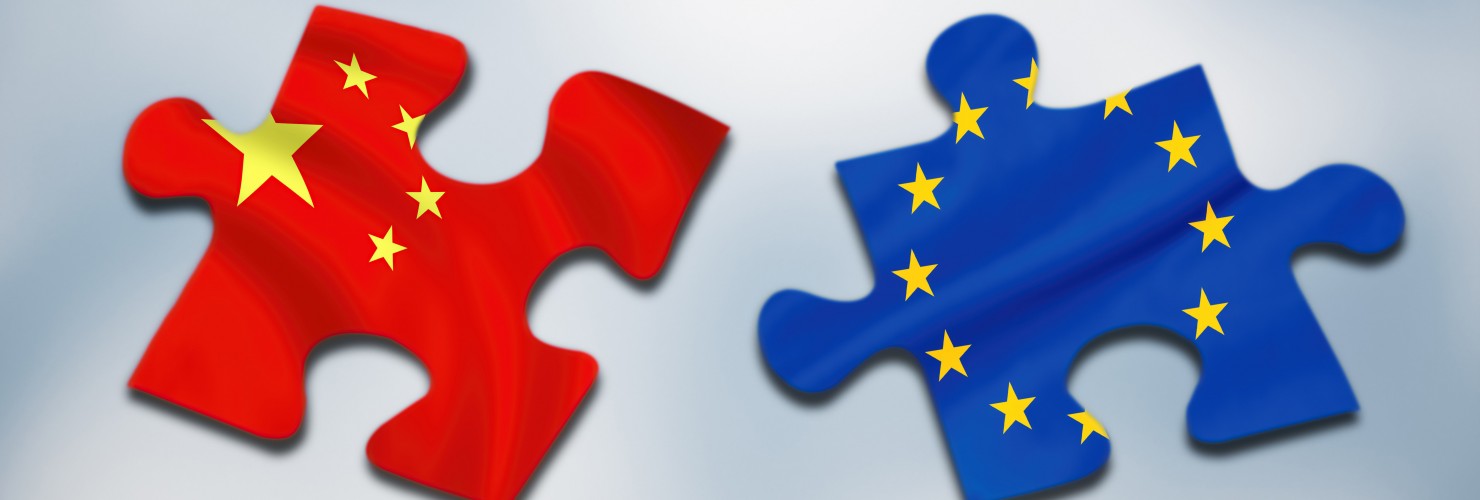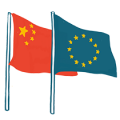

Can the EU really re-engage with China?
After a difficult year, Brussels appears to be attempting to mend fences with China and reestablish a dialogue.
Since September, the key word in Brussels has been “re-engage”. What re-engage means and how it will look like is still open for debate. In any case, China’s ongoing coercive pressure on Lithuania and the proposal of an European anti-coercion instrument will make re-engagement extremely difficult.
The year in EU-China relations began in a downright rosy fashion. The newly concluded Comprehensive Agreement on Investments (CAI) brought a positive outlook to the relationship. As Chancellor Merkel, President Macron, and the Presidents of both the EU Council and Commission joined a call with President Xi, the image conveyed was certainly one of closer ties.
Yet, there was more going on behind the scenes of this important virtual conference, much of which was certainly not so outwardly positive.
The agreement also reignited an intense debate within the EU on a proper approach towards China after the pandemic, how developments in Hong Kong should be handled, and renewed attention to Xinjiang.
These dynamics came to a head in March when the exchange of sanctions between the EU and China placed a sudden halt and a lasting strain on the relationship between Brussels and Beijing. For several months, the exchanges were reduced to the bare minimum. The high-level meeting between the EU High Representative Josep Borrell and China’s Foreign Minister Wang Yi that took place in July paved the way for a slow and uncertain return to normality.
In the meantime, however, Beijing proceeded with bilateral engagement with member states, a longstanding issue in the relationship between the EU and China.
The EU’s changing approach to China
Regardless of the developments, the EU has not stopped abiding by the tripartite approach adopted in the 2019 EU-China Strategic Outlook. To this day China remains a partner, an economic competitor and a systemic rival of the EU. The wording might seem contradictory, but it reflects the complex reality of such a relationship. In line with that, at a time when the latter two aspects have increasingly become prominent, the EU attempts to recover the “partner” element of the relationship by pushing for more engagement. Sabine Weyand, European Commission’s Director-General for Trade confirmed that “there is a growing realization in the EU that we have to re-engage with China.” Brussels is well aware that losing channels of communication with China has been and will keep being damaging for the EU and the world.
The relationship between the EU and China used to be one of the venues where difficult topics could be raised without carrying the same degree of ideological tension that occurs between China and the US. To a certain extent, Brussels is trying to reclaim that space. In the meantime, both the EU and China have changed their approach to foreign policy.
In her State of the European Union address, Ursula von der Leyen referred to China several times, either directly or indirectly. The references were mostly pointing towards a competitive approach in the likes of the new chips act to construct European capacity to produce semiconductors and the Global Gateway, a connectivity project that will add to the alternatives to China’s Belt and Road Initiative. Mentions of the importance of European values and the rule of law add on to the elements that underpin the European foreign policy and that find difficult terrain in the relationship with China.
Yet, we must be careful not to confuse resoluteness and a clear-eyed view of the challenges that the EU-China relationship faces with lack of desire to re-engage.
The two approaches can and do coexist. Despite the different positions within and between the institutions, there is a palpable widespread desire to unlock the current situation. For proof of this, one need look no further than the efforts to cement an agreement for an EU-China Summit before the end of 2021. As the year draws to a close, a summit at the beginning of 2022 is now more likely. At the very least, the energy spent by Brussels to make the summit happen shows that the drive in the EU to reopen a line of formal and comprehensive dialogue with China is real.
However, the changes brought by the pandemic, the situation in Hong Kong and Xinjiang as well as the exchange of sanctions seem to have had a rather permanent impact on the relationship.
The pandemic, in particular, placed a significant strain on the vital people-to-people exchanges and communication.
The lack of candid in-person communication has contributed to the hyping of narratives and misunderstandings. The introduction of the national security law in Hong Kong has confirmed fears that China is moving on from the status quo towards a more proactive approach to achieve territorial unity. The future implications for Taiwan are undeniably daunting for the international community and the EU as well.
The difficulties of re-engagement
Ultimately, the reason why any form of re-engagement will be difficult and precarious is that the political direction of China is moving away from open dialogue, the values the EU believes in and the rule of law. That is not likely to change in the medium term, and therefore, the EU’s foreign policy towards China has been developing to respond to what China is today rather than what we would want it to be. That move includes the adoption of a series of initiatives and measures that are not too popular in Beijing. It is not just about Global Gateway and the Indo-Pacific Strategy, but also the anti-coercion instrument, the anti-foreign subsidies regulation, and the international procurement instrument, to mention a few.
Of all the above, the anti-coercion instrument has the most immediate possibility to endanger the re-engagement agenda, even before the policy is adopted.
The ongoing spat between China and Lithuania cannot be looked at as isolated from the broader EU contest nor from the anti-coercion instrument recently proposed by the European Commission. Commission Vice-President Valdis Dombrovskis has himself recognized the connection between the two, as Lithuania “could clearly be a reason to carry out an assessment to determine if there is economic coercion”.
When Vilnius decided to go ahead with the opening of the Taiwanese Representative Office in Lithuania, China responded firmly by adopting a series of economic retaliatory measures, the latter of which was the deletion of Lithuania from China’s customs systems. Later Lithuania was reinstated in the list and then cancelled again, leaving the situation unresolved and future developments unclear.
If economic coercion towards Lithuania continues, the EU will have to show solidarity, as a lack of support for Vilnius would be a price too high to pay. It would expose the block’s core weakness, division, at a higher degree than it has in the past. Moreover, it would create an almost surreal situation, where the EU launches a new anti-coercion instrument while doing nothing to help Lithuania, facing Chinese coercion at the very moment. In a rare format, the EU High Representative Josep Borrell and Commission Vice-President Dombrovskis have already released a joint statement to make explicit that developments with Lithuania have an impact on the whole of the EU-China relations.
To be sure, re-engagement is hoped for and should be supported. Yet, if it happens, it will be moderate and circumscribed. It is important to seek out and support platforms to engage with China and attempt to foster dialogue where possible. If anything, these tools are crucial in avoiding potentially deleterious misunderstandings. Further, to find a balance between the three aspects of the tripartite approach, Brussels must strike a better trade-off between a holistic approach and compartmentalization.
As of now, it would be counterproductive to go all-in with any of the options above.
This article was first published by China Observers in Central and Eastern Europe (CHOICE) on December 13, 2021.

